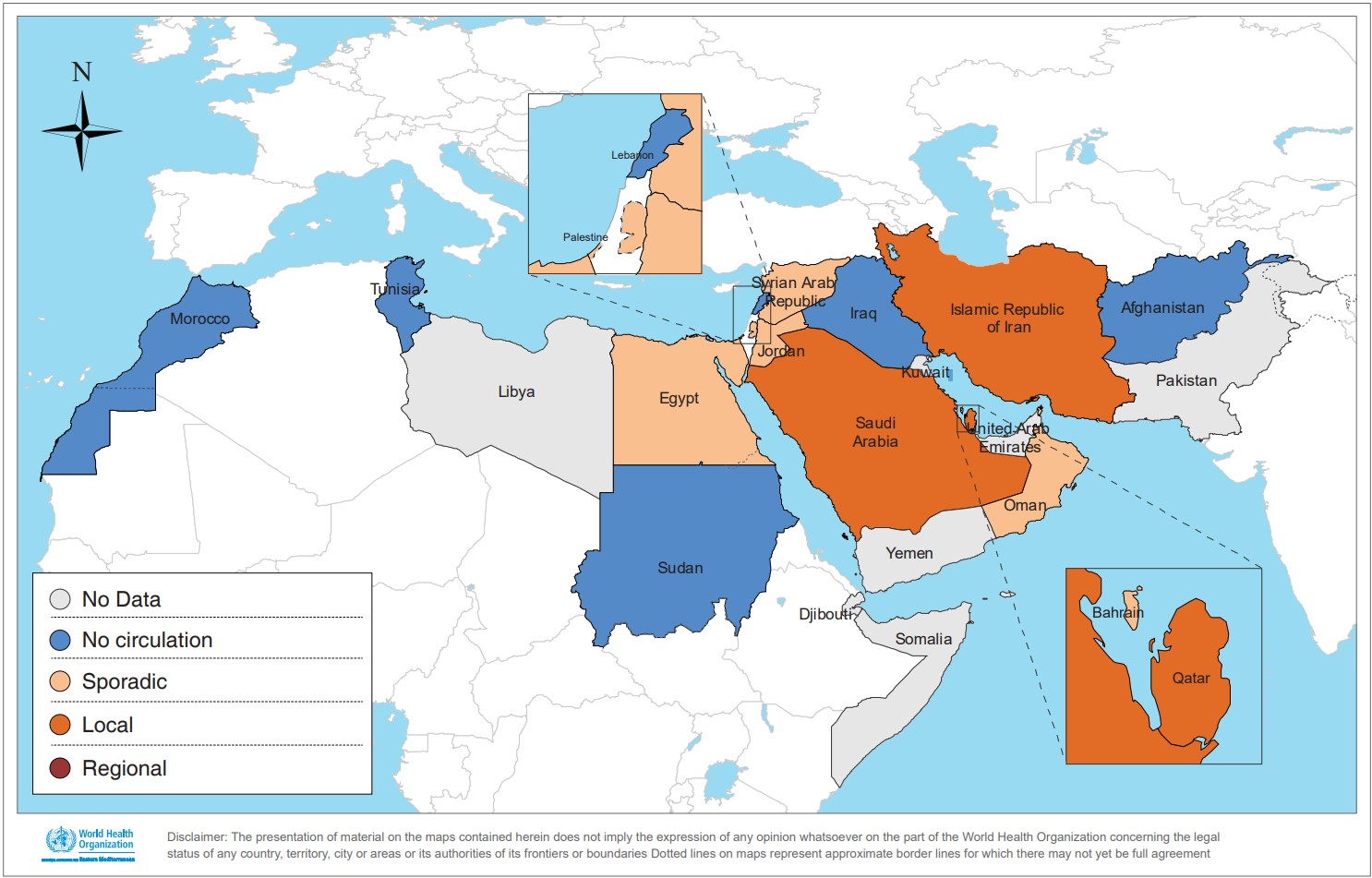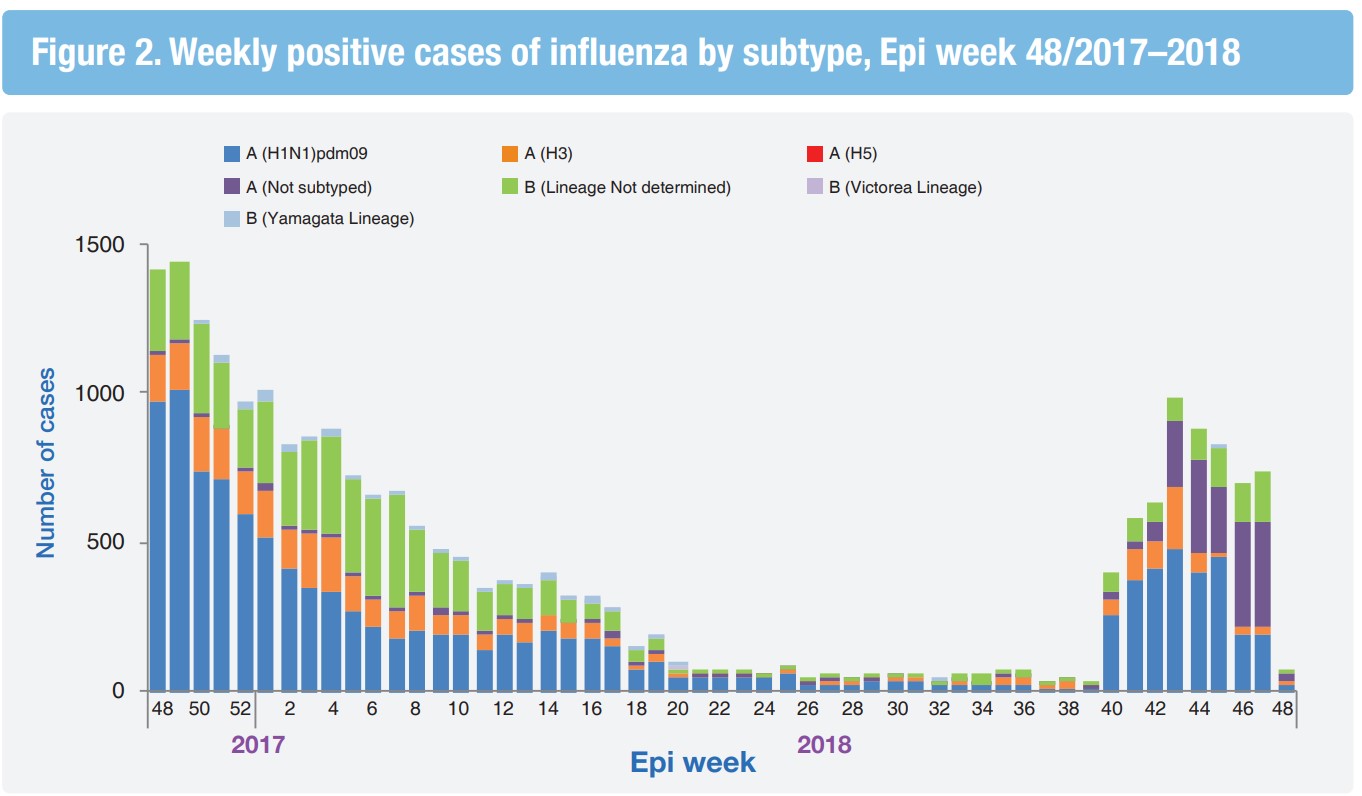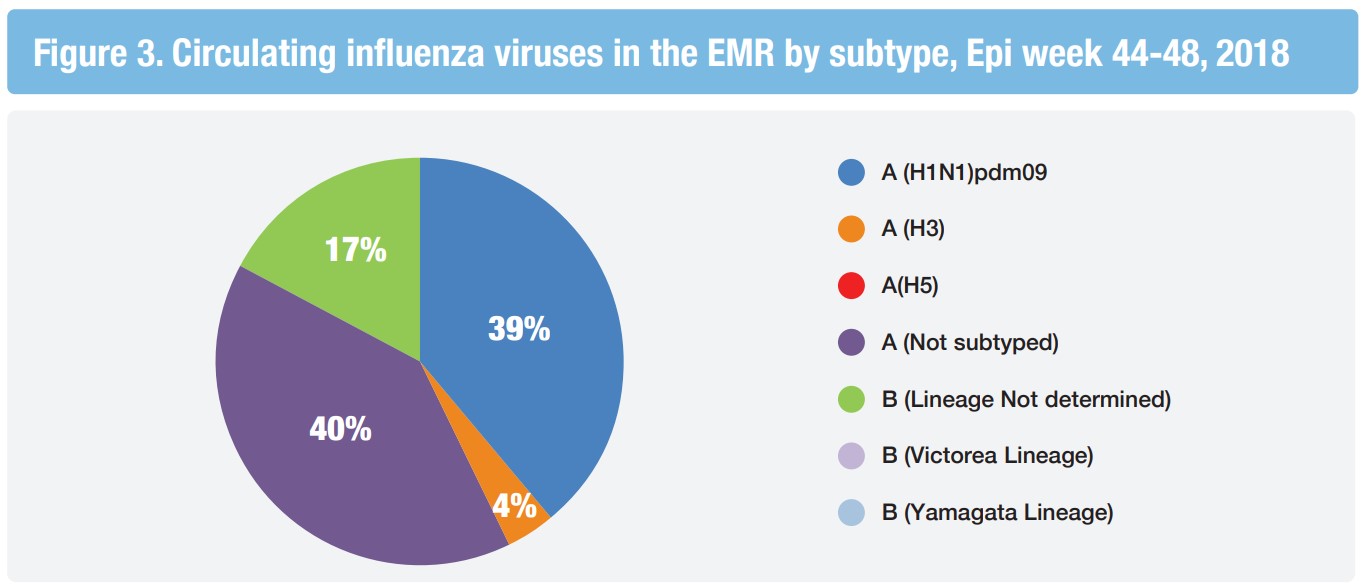In the WHO Eastern Mediterranean Region, influenza activity continues to increase in the month of November in many countries reporting data to FluNet and EMFLU namely, Afghanistan, Bahrain, Egypt, Iran (Islamic Republic of), Iraq, Jordan, Lebanon, Morocco, occupied Palestinian territory, Oman, Qatar, Saudi Arabia, Sudan, Syrian Arab Republic and Tunisia.
 Fig. 1. Influenza geographic spread in Eastern Mediterranean Region, November 2018
Fig. 1. Influenza geographic spread in Eastern Mediterranean Region, November 2018
Influenza activity by subtype
• In November 2018, no new cases of human influenza A(H5N1) were reported in Egypt.
• In the northern Africa influenza transmission zone, A(H3) virus was detected predominantly in Egypt, while Morocco reported no activity.
• In the western Asia influenza transmission zone, Oman, Qatar and Saudi Arabia reported co-circulation of all seasonal influenza viruses, while in Bahrain influenza A(H1N1)pdm09 and A(H3) virus were detected. Jordan, occupied Palestinian territory and Syrian Arab Republic reported circulation of sporadic cases of the influenza A(H1N1)pdm09, while Iraq and Lebanon reported no activity.
• In southern Asia transmission zone, Iran (Islamic Republic of) reported circulation of all seasonal influenza viruses, while Afghanistan reported no activity.

Circulating influenza viruses by subtype
• During November 2018, national influenza centres and influenza laboratories in the Region tested a total of 10728 specimens for influenza viruses of which 3194 tested positive (30%).
• The average percentage of positivity rates is 30%, with highest positivity rate recorded in Bahrain and Qatar.
• Of the viruses tested; 2659 (83%) were influenza A viruses, including 1235 (39%) influenza A(H1N1)pdm09 virus and 142 (4%) were influenza A(H3) virus. Influenza B (Lineage Not determined) virus accounted for 533 (17%) (Figure 3).









